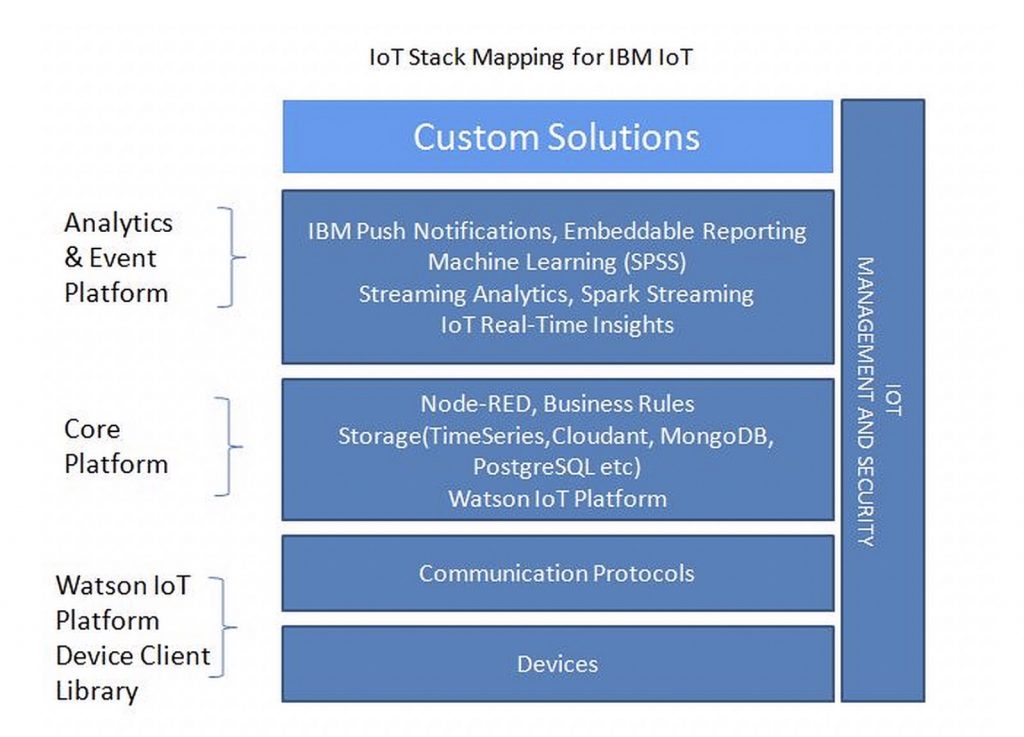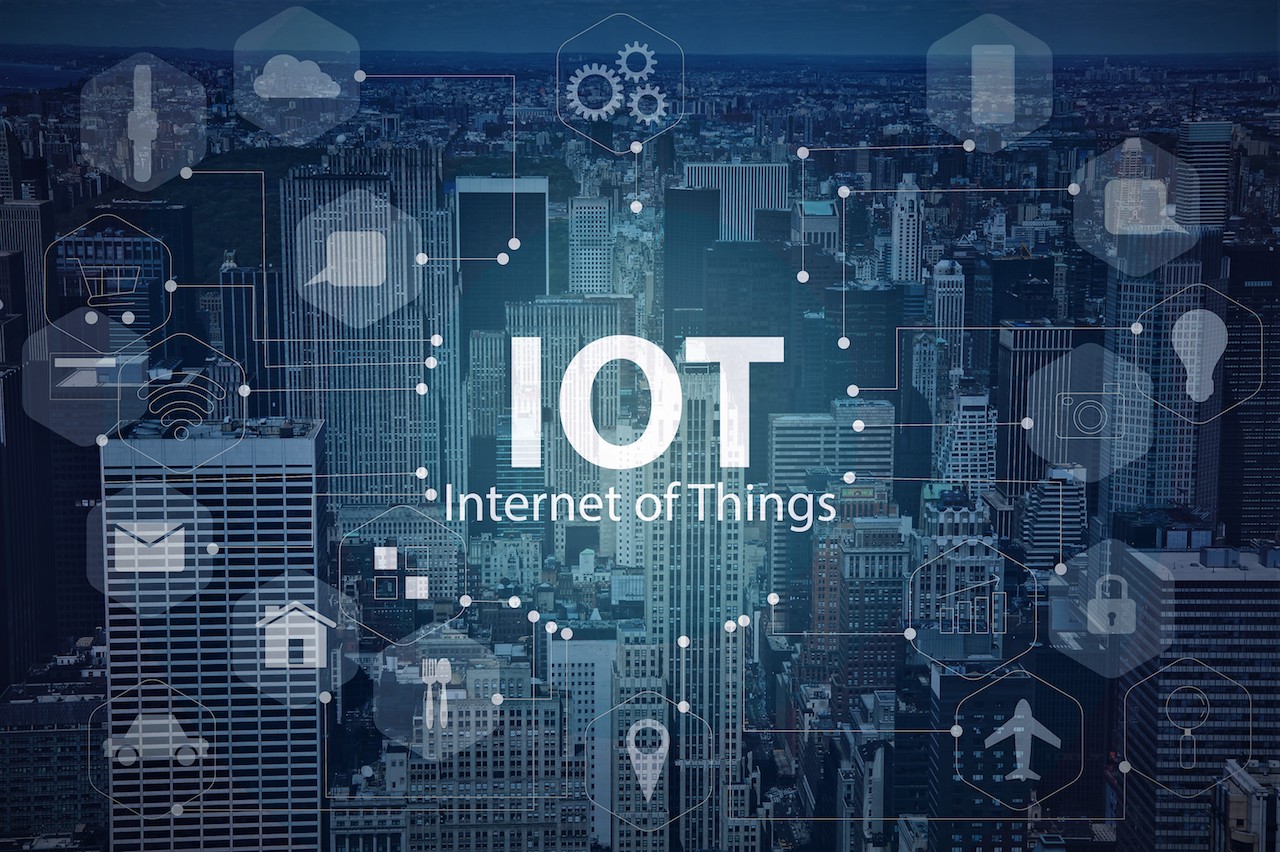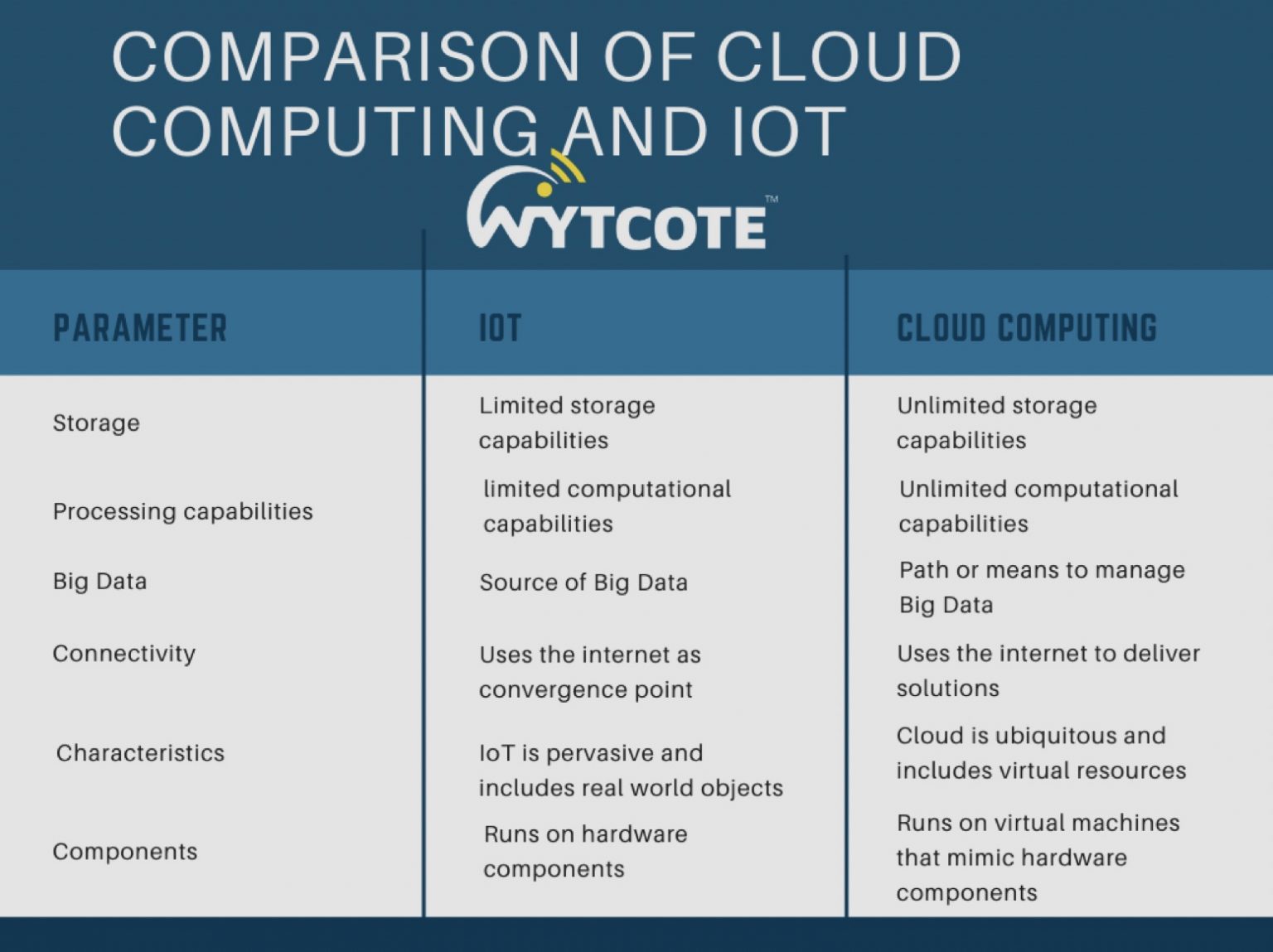What is IBM Cloud Internet of Things?
IBM Cloud Internet of Things (IoT) is a robust platform that empowers businesses and developers to leverage IoT data for enhanced decision-making and automation. In today’s interconnected world, IoT devices generate vast amounts of data, providing valuable insights that can drive operational efficiency, improve customer experiences, and create new revenue streams. IBM Cloud IoT offers a secure and scalable solution for managing, analyzing, and acting on IoT data.
At the core of IBM Cloud IoT is the ability to connect and manage a vast array of IoT devices, ranging from sensors and actuators to industrial machines and wearables. This connectivity enables organizations to gather real-time data from their devices, which can then be processed and analyzed using advanced analytics tools and artificial intelligence algorithms. The insights gained from this data can be used to optimize operations, create personalized experiences, and develop new services and products.
IBM Cloud IoT also offers robust security features, ensuring that sensitive data remains protected throughout the entire data lifecycle. With end-to-end encryption, device authentication, and access controls, organizations can trust that their IoT data is secure and compliant with relevant regulations.
Key Features and Benefits of IBM Cloud IoT
IBM Cloud IoT offers a wide range of features and benefits that make it an ideal platform for businesses and developers looking to harness the power of IoT data. Here are some of the key features and benefits of IBM Cloud IoT:
- Device Management: IBM Cloud IoT provides a centralized dashboard for managing and monitoring IoT devices, enabling organizations to quickly identify and resolve issues, update firmware, and ensure optimal performance.
- Data Analytics: IBM Cloud IoT offers advanced analytics tools that enable organizations to process and analyze IoT data in real-time. This data can be used to gain insights into customer behavior, optimize operations, and identify new revenue streams.
- Artificial Intelligence: IBM Cloud IoT integrates with IBM Watson, providing access to advanced AI capabilities such as natural language processing, computer vision, and machine learning. These capabilities enable organizations to develop intelligent IoT applications that can learn from data and make predictions.
- Security: IBM Cloud IoT offers robust security features, including end-to-end encryption, device authentication, and access controls. These features ensure that sensitive data remains protected throughout the entire data lifecycle.
By leveraging these features, organizations can unlock the full potential of IoT data, driving innovation, improving operational efficiency, and creating new revenue streams. With IBM Cloud IoT, businesses and developers can build and deploy IoT applications with confidence, knowing that their data is secure and their devices are managed and monitored effectively.
Popular IBM Cloud IoT Products and Solutions
IBM Cloud IoT offers a range of products and solutions that cater to the unique needs of businesses and developers. Here are some of the most popular IBM Cloud IoT products and solutions:
IBM Watson IoT Platform
IBM Watson IoT Platform is a cognitive IoT platform that enables businesses to securely connect and manage IoT devices, analyze data, and build applications. The platform integrates with IBM Watson, providing access to advanced AI capabilities such as natural language processing, computer vision, and machine learning. With IBM Watson IoT Platform, businesses can unlock insights from IoT data, drive innovation, and improve operational efficiency.
IBM IoT Connect
IBM IoT Connect is a device management solution that enables businesses to securely connect and manage IoT devices at scale. The solution provides a centralized dashboard for monitoring device status, updating firmware, and troubleshooting issues. With IBM IoT Connect, businesses can ensure that their IoT devices are always up-to-date and performing optimally.
IBM Edge Application Manager
IBM Edge Application Manager is an edge computing solution that enables businesses to deploy and manage applications at the edge of the network. The solution provides a secure and scalable infrastructure for running applications on IoT devices, reducing latency, and improving performance. With IBM Edge Application Manager, businesses can unlock the full potential of edge computing and drive innovation in their IoT deployments.
These products and solutions are just a few examples of what IBM Cloud IoT has to offer. By leveraging these products and solutions, businesses and developers can build and deploy IoT applications with confidence, knowing that they have access to a robust and secure infrastructure for managing and analyzing IoT data.
How to Get Started with IBM Cloud IoT
Getting started with IBM Cloud IoT is a straightforward process that can be completed in a few simple steps. Here’s a brief overview of how to get started:
Step 1: Create an IBM Cloud Account
The first step in getting started with IBM Cloud IoT is to create an IBM Cloud account. This can be done by visiting the IBM Cloud website and following the prompts to create a new account. Once the account is created, you’ll have access to a range of IBM Cloud services, including IBM Cloud IoT.
Step 2: Set Up a Device
Once you have an IBM Cloud account, the next step is to set up an IoT device. This can be any device that is capable of connecting to the internet and sending data, such as a sensor, camera, or microcontroller. To set up the device, you’ll need to follow the manufacturer’s instructions for connecting the device to the internet and configuring it to send data to IBM Cloud.
Step 3: Connect the Device to IBM Cloud IoT
Once the device is set up and connected to the internet, the next step is to connect it to IBM Cloud IoT. This can be done by creating a new device type in the IBM Cloud IoT dashboard and adding the device’s credentials. Once the device is added, you can start receiving data from the device in real-time.
Step 4: Analyze and Act on the Data
Now that the device is connected to IBM Cloud IoT, you can start analyzing and acting on the data. This can be done using a range of IBM Cloud services, such as IBM Watson Studio, IBM Cloud Functions, and IBM Cloud Analytics. These services enable you to visualize the data, perform advanced analytics, and trigger actions based on the data.
Getting started with IBM Cloud IoT is a simple process that can be completed in just a few steps. By following these steps, you can unlock the full potential of IoT data and start harnessing the power of IBM Cloud IoT for improved decision-making and automation.
Real-World Use Cases of IBM Cloud IoT
IBM Cloud IoT is being used in a variety of industries to improve operational efficiency, reduce costs, and enhance customer experiences. Here are some real-world use cases of IBM Cloud IoT:
Manufacturing: Predictive Maintenance
Predictive maintenance is a key use case for IBM Cloud IoT in the manufacturing industry. By using IoT sensors to monitor equipment in real-time, manufacturers can identify potential issues before they become major problems. This enables manufacturers to schedule maintenance proactively, reducing downtime and improving overall equipment effectiveness (OEE).
Transportation: Fleet Management
Fleet management is another area where IBM Cloud IoT is making a big impact. By using IoT sensors to monitor vehicles in real-time, fleet managers can optimize routes, reduce fuel consumption, and improve driver safety. This enables fleet managers to reduce costs, improve efficiency, and enhance customer satisfaction.
Healthcare: Remote Patient Monitoring
Remote patient monitoring is a growing use case for IBM Cloud IoT in the healthcare industry. By using IoT sensors to monitor patients in real-time, healthcare providers can detect potential issues early and intervene proactively. This enables healthcare providers to improve patient outcomes, reduce hospital readmissions, and lower healthcare costs.
Energy: Grid Management
Grid management is a key use case for IBM Cloud IoT in the energy industry. By using IoT sensors to monitor the power grid in real-time, energy providers can detect potential issues before they become major problems. This enables energy providers to improve grid reliability, reduce outages, and enhance customer satisfaction.
These are just a few examples of how IBM Cloud IoT is being used in real-world scenarios. By harnessing the power of IoT data, businesses and developers can unlock new insights, automate processes, and improve decision-making. With IBM Cloud IoT, the possibilities are endless.
Best Practices for Implementing IBM Cloud IoT
Implementing IBM Cloud IoT can be a complex process, but by following best practices, businesses and developers can ensure a successful deployment. Here are some best practices for implementing IBM Cloud IoT:
Define Clear Objectives
Before implementing IBM Cloud IoT, it’s essential to define clear objectives. This will help businesses and developers to focus on the most critical use cases and ensure that the deployment aligns with their overall strategy. Objectives might include improving operational efficiency, reducing costs, or enhancing customer experiences.
Select the Right Devices
Selecting the right devices is critical for a successful IBM Cloud IoT deployment. Businesses and developers should consider factors such as compatibility, scalability, and security when selecting devices. They should also ensure that the devices are capable of generating the data required to meet their objectives.
Ensure Data Privacy and Security
Data privacy and security are critical considerations when implementing IBM Cloud IoT. Businesses and developers should ensure that they have robust security measures in place, such as encryption, access controls, and regular security audits. They should also comply with relevant data privacy regulations, such as GDPR or CCPA.
Implement Device Management
Implementing device management is essential for managing and maintaining IoT devices. IBM Cloud IoT provides device management capabilities, such as remote device provisioning, configuration, and monitoring. This enables businesses and developers to ensure that their devices are up-to-date, secure, and performing optimally.
Implement Data Analytics
Implementing data analytics is critical for harnessing the power of IoT data. IBM Cloud IoT provides data analytics capabilities, such as real-time data processing, machine learning, and AI. This enables businesses and developers to unlock new insights, automate processes, and improve decision-making.
Monitor and Optimize
Monitoring and optimization are critical for ensuring the ongoing success of an IBM Cloud IoT deployment. Businesses and developers should regularly monitor their devices, data, and analytics to identify potential issues and opportunities for optimization. They should also implement feedback loops to continuously improve their deployment over time.
By following these best practices, businesses and developers can ensure a successful IBM Cloud IoT deployment. However, they should also be aware of potential pitfalls, such as complexity, cost, and security risks. By addressing these challenges proactively, they can maximize the value of their IBM Cloud IoT deployment and drive business success.
Comparing IBM Cloud IoT with Competitors
When it comes to IoT platforms, IBM Cloud IoT is one of the leading players in the market. However, it’s not the only option available. Here’s a comparison of IBM Cloud IoT with its competitors, including Microsoft Azure IoT, Amazon Web Services IoT, and Google Cloud IoT.
IBM Cloud IoT vs. Microsoft Azure IoT
Both IBM Cloud IoT and Microsoft Azure IoT offer robust IoT solutions with similar features and capabilities. However, there are some differences to consider. For instance, Microsoft Azure IoT provides a more extensive range of pre-built services and integrations, making it easier to get started with IoT projects. On the other hand, IBM Cloud IoT offers more advanced analytics and AI capabilities, making it a better choice for complex IoT projects.
IBM Cloud IoT vs. Amazon Web Services IoT
Amazon Web Services IoT is another popular IoT platform that offers similar features and capabilities as IBM Cloud IoT. However, AWS IoT has a more extensive range of device management and connectivity options, making it a better choice for large-scale IoT deployments. In contrast, IBM Cloud IoT offers more advanced analytics and AI capabilities, making it a better choice for projects that require complex data processing and analysis.
IBM Cloud IoT vs. Google Cloud IoT
Google Cloud IoT is a relatively new player in the IoT market, but it’s quickly gaining popularity due to its advanced analytics and AI capabilities. Like IBM Cloud IoT, Google Cloud IoT offers robust device management and connectivity options, making it a good choice for large-scale IoT deployments. However, IBM Cloud IoT has a more extensive range of pre-built services and integrations, making it easier to get started with IoT projects.
When comparing IBM Cloud IoT with its competitors, it’s essential to consider the specific needs and objectives of your IoT project. While all of these platforms offer similar features and capabilities, they have different strengths and weaknesses that can impact their suitability for your project. By carefully evaluating each platform, you can choose the one that best meets your needs and helps you achieve your IoT goals.
Future Trends and Opportunities in IBM Cloud IoT
IBM Cloud IoT is a powerful platform that offers a wide range of features and benefits for businesses and developers. As the Internet of Things (IoT) continues to evolve, so too will IBM Cloud IoT, with new trends and opportunities emerging in the coming years. Here are some of the most significant trends and opportunities to watch for in IBM Cloud IoT.
5G and Edge Computing
5G and edge computing are two of the most significant trends in IoT, and IBM Cloud IoT is well-positioned to take advantage of these trends. 5G offers faster speeds, lower latency, and greater capacity than previous generations of wireless technology, making it ideal for IoT applications that require real-time data processing and analysis. Edge computing, meanwhile, enables data processing and analysis to occur closer to the source of the data, reducing latency and improving performance.
IBM Cloud IoT already offers edge computing capabilities, and the company is actively working to integrate 5G into its platform. By combining 5G and edge computing, IBM Cloud IoT can enable even more sophisticated IoT applications, such as real-time video analytics, autonomous vehicles, and smart cities.
Artificial Intelligence
Artificial intelligence (AI) is another significant trend in IoT, and IBM Cloud IoT is at the forefront of this trend. IBM Watson, the company’s AI platform, is integrated into IBM Cloud IoT, enabling businesses and developers to build sophisticated AI-powered IoT applications. With AI, IoT devices can become more intelligent and autonomous, enabling new use cases and applications that were previously impossible.
In the coming years, we can expect to see even more sophisticated AI capabilities integrated into IBM Cloud IoT. This will enable businesses and developers to build even more intelligent and autonomous IoT applications, from predictive maintenance to autonomous robots and beyond.
Data Privacy and Security
Data privacy and security are critical concerns in IoT, and IBM Cloud IoT is well-positioned to address these concerns. The platform offers robust security features, such as end-to-end encryption, secure device onboarding, and anomaly detection. These features help ensure that IoT data is secure and protected, reducing the risk of data breaches and other security threats.
In the coming years, we can expect to see even more sophisticated security features integrated into IBM Cloud IoT. This will help businesses and developers build even more secure and reliable IoT applications, reducing the risk of data breaches and other security threats.
Sustainability and Social Impact
Finally, sustainability and social impact are becoming increasingly important in IoT. IBM Cloud IoT is well-positioned to address these concerns, with a range of features and capabilities that enable businesses and developers to build sustainable and socially responsible IoT applications.
For example, IBM Cloud IoT can be used to monitor and optimize energy consumption in buildings and industrial processes, reducing carbon emissions and energy costs. The platform can also be used to monitor air and water quality, enabling businesses and communities to take action to improve public health and safety.
In the coming years, we can expect to see even more focus on sustainability and social impact in IBM Cloud IoT. This will enable businesses and developers to build even more sustainable and socially responsible IoT applications, creating new opportunities for innovation and growth while also making a positive impact on society and the environment.






